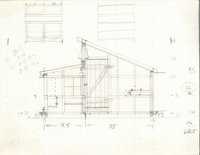Layers are essential in any cadd, and many photo, programs......using them will greatly ease your work(once you get the hang of them).Sweet!
I did not know about layers. Until now.
With Inventor, and other parabolics, you can turn on and off all parts in model.
Learning curves are painful, often easier to start over than try to repair/modify.....but it's always faster the second timeYa I'm still working on the plan but had to ground my son who knows how to use sketchup so thing are at a stand still right now. I did find doubling up 2x4 sometime fuses them and then it a pain to make changes. I had to delete some thing the pull more 2x4 in and start over. I find it very tedious. and takes a lot of hours to get anything done.
Scott

When I first started modeling with Inventor I spent twice(or more) as many hours working than I could bill to client.






